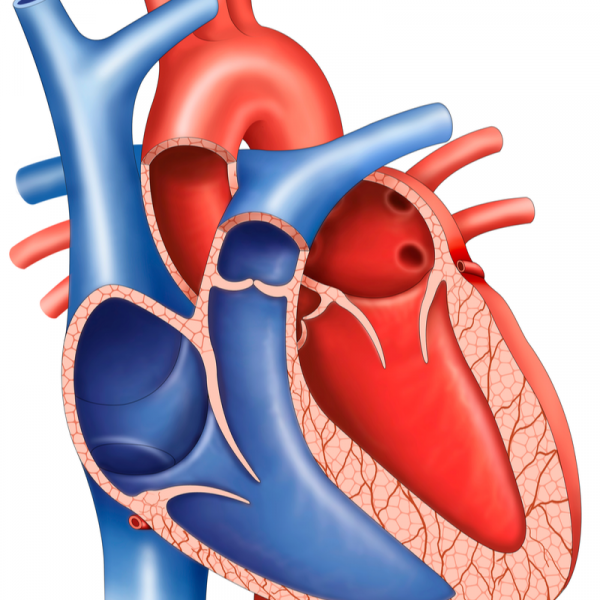
What is a pericardial cyst?
A pericardial cyst originates from the pericardium and is a benign tumour of the mediastinum. Pericardial cysts occur rather rarely and are usually located in the right diaphragmatic rib angle, in close proximity to the right side of the heart. Pericardial cysts in the left side of the body are even rarer. A pericardial cyst can grow to between 12 and 15 centimetres in size.
What forms of pericardial cysts are distinguished?
Doctors distinguish between a congenital and an acquired pericardial cyst. While congenital cysts are also called coelomic cysts, lymphangiomatous (affecting the right diaphragm) cysts, bronchial or teratomatous cysts (benign tumours), acquired cysts are those caused either by parasites, other tumour diseases or post-haemorrhagic.
What are the symptoms of a pericardial cyst?
More than half of all those affected do not complain of any symptoms. However, if it is a large pericardial cyst, it can cause chest pain (retrosternal pain), difficulty breathing (dyspnoea) and/or difficulty swallowing (dysphagia). Angina pectoris (chest tightness, heart tightness) may also occur.
How is a pericardial cyst diagnosed?
Often, a pericardial cyst is discovered rather accidentally, especially if it is asymptomatic. A pericardial cyst may be suspected based on an abnormal chest X-ray. Further imaging procedures such as a heart echo (echocardiography), magnetic resonance imaging (MRI) or computer tomography (CT) can confirm the diagnosis.
How is a pericardial cyst treated?
If the pericardial cyst is asymptomatic, it is usually only observed at first (watchful waiting). As soon as symptoms appear, surgical removal of the pericardial cyst can be considered. The doctor can usually choose between two methods, thoracic surgery and thoracoscopy. Thoracic surgery is an open surgical method, which carries the risk of complications. It is not uncommon for the patient to develop massive bleeding and/or an infection during the operation. Also, in contrast to thoracoscopy, the recovery period is significantly longer.
Thoracoscopy, on the other hand, does not require a large incision. Using targeted incisions, probes are inserted into the chest cavity and the cyst is specifically removed. The risk of bleeding and infection is reduced to a minimum. The patient also recovers relatively quickly after a thorascopy. There are no alternative treatments for a pericardial cyst.
What is the prognosis for a pericardial cyst?
If the pericardial cyst is treated in time, the chances of recovery are good. This is especially true if the pericardial cyst can be completely removed. If, on the other hand, a somewhat larger pericardial cyst that also causes discomfort remains untreated, the prognosis is poor and can even lead to a fatal outcome.
| Pathogen | Source | Members - Area |
|---|---|---|
| Pericardial cyst | EDTFL | As a NLS member you have direct access to these frequency lists |
